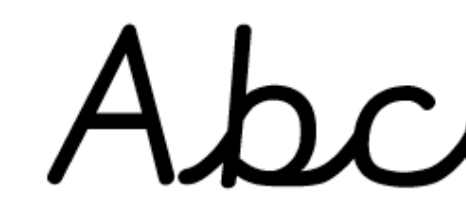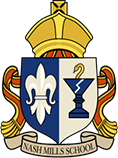Handwriting
Handwriting
In keeping the appearance of work in books of high quality, it is important that all pupils within the school are supported to develop clear and neat handwriting. This should be expected and applied in all subject areas. It is important that staff understand that handwriting is subjective to each and every individual but also that we should expect a consistent approach to the teaching of handwriting throughout the school.
In teaching and supporting pupils to have neat handwriting, we use the following expectations. These are set out within four distinct steps, which we expect pupils to reach at certain points. However, where a child may need additional support to embed or develop skills, the time taken to achieve these steps may be adjusted.
Step 1 – Early Years and the start of Year 1


Pupils will be taught unjoined letter formations, using the rhymes and graphemes from the Read, Write Inc. scheme. This will be taught within phonics sessions and will be revisited as part of teacher-led sessions and during child-initiated learning. As pupils move through Reception, a greater level of expectation will be paid to ensuring that all children are using these formations in all of their written work.
Step 2 – Mid-Year 1 and Year 2

Pupils will continue to be taught letter formations and will have at least 3 lessons each week where this will be specifically taught, to continue in line with Red, Write Inc. formations but also to begin to include initial leading joins, to support pupils in beginning to join their writing. All pupils will have handwriting books for this.
In English and some subjects which anticipate longer writing, pupils in Key Stage 1 will have books which provide handwriting lines for them to use. There will also be use of the same handwriting style, where possible, from staff to model expectations throughout lessons in addition to the handwriting font being used in worksheets and interactive whiteboard slides. It is, however, helpful for pupils to begin to access other fonts and typefaces and therefore a mix will be expected.
Step 3 – Year 3 onwards

Formations will be expected to progress to joined cursive in Year 3. All pupils will have handwriting books for this.
Books in all subjects will used normal lines, however where pupils still have not secured use of ascenders or descenders, they will be able to use handwriting lines. Joined cursive will be used by staff to model expectations throughout lessons in addition to the handwriting font being used in some worksheets and interactive whiteboard slides (XCCW Joined). It is, however, helpful for pupils to begin to access other fonts and typefaces and therefore a mix will be expected.
As pupils show greater accuracy with this in Years 3 and 4, teachers may request that they use a pen. This decision will be made by the English subject lead. All pupils in Years 5 and 6 will use a pen for longer written work.
Step 4 – When pupils have an established handwriting style
Cursive handwriting will be expected, where possible, in all areas of writing, however we recognise that some pupils will have alternative handwriting styles of similar neatness. In his case, we would expect to see neat, cursive script being used in all final draft work.
